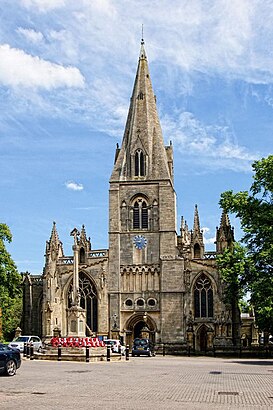See Sleaford, East Midlands, on the map
Directions to Sleaford (East Midlands) with public transport
The following transport lines have routes that pass near Sleaford
Bus:
Train:
How to get to Sleaford by Bus?
Click on the Bus route to see step by step directions with maps, line arrival times and updated time schedules.
How to get to Sleaford by Train?
Click on the Train route to see step by step directions with maps, line arrival times and updated time schedules.
Bus stations near Sleaford in East Midlands
- Copeland Court, Sleaford,1 min walk,
Bus lines to Sleaford in East Midlands
- IT2|SLEAFORD INTO TOWN,Sleaford Into Town,
- IT3|SLEAFORD INTO TOWN,Sleaford Into Town,
- M4,Grantham - Moy Park,
- WM06,Ancaster - Welbourn,
- SLE9,Witham St Hughs - Sleaford,
- 27,Sleaford - Grantham,
- S35S,Holdingham - North Rauceby,
- S73S,Kirkby La Thorpe - Sleaford,
- S156S,Sleaford - Grantham,
What are the nearest stations to Sleaford?
The nearest stations to Sleaford are:
- Copeland Court, Sleaford is 73 meters away, 1 min walk.
Which Bus lines stop near Sleaford?
These Bus lines stop near Sleaford: 27, 31, IT
Which Train lines stop near Sleaford?
These Train lines stop near Sleaford: EAST MIDLANDS TRAINS
What’s the nearest bus stop to Sleaford in East Midlands?
The nearest bus stop to Sleaford in East Midlands is Copeland Court, Sleaford. It’s a 1 min walk away.
See Sleaford, East Midlands, on the map

Public Transit to Sleaford in East Midlands
Wondering how to get to Sleaford in East Midlands, United Kingdom? Moovit helps you find the best way to get to Sleaford with step-by-step directions from the nearest public transit station.
Moovit provides free maps and live directions to help you navigate through your city. View schedules, routes, timetables, and find out how long does it take to get to Sleaford in real time.
Looking for the nearest stop or station to Sleaford? Check out this list of stops closest to your destination: Copeland Court.
Bus:Train:
Want to see if there’s another route that gets you there at an earlier time? Moovit helps you find alternative routes or times. Get directions from and directions to Sleaford easily from the Moovit App or Website.
We make riding to Sleaford easy, which is why over 1.5 million users, including users in East Midlands, trust Moovit as the best app for public transit. You don’t need to download an individual bus app or train app, Moovit is your all-in-one transit app that helps you find the best bus time or train time available.
For information on prices of Bus and Train, costs and ride fares to Sleaford, please check the Moovit app.
Use the app to navigate to popular places including to the airport, hospital, stadium, grocery store, mall, coffee shop, school, college, and university.
Sleaford Address: Sleaford street in East Midlands

Attractions near Sleaford
- Copeland Court
- Charlotte Street
- St Barnabas
- B1517
- Lincolnshire Secure Unit
- Swallow Close
- The Close
- Carlton Close
- Ancaster Drive
- 1 Ashbourne Close
- Millers Close
- 7 King Edward Street
- Harvest Way
- 21 Rookery Avenue
- Thrush Close
- Harrison Browns Butchers
- M & C Alteration Service
- Queen Street
- Spriggs Close
- Queen Street Fish & Chip Shops
How to get to popular attractions in East Midlands with public transportation
- Ikea, Broxtowe
- Gedling, Gedling
- Silverstone Village, South Northamptonshire
- Caroline Chisholm School, Northampton
- Bagworth, Hinckley And Bosworth
- Sir Robert Pattinson Academy, North Kesteven
- The Castlewood (Brewers Fayre), Bolsover
- RAF Wittering, Peterborough
- Memsaab Restaurant, Nottingham
- Kingsway Hospital, Derby
- Cardea, Peterborough
- Chesterfield College, Chesterfield
- Bradlaugh Fields, Northampton
- Idlewells Shopping Centre, Ashfield
- Outwood Academy Newbold, Chesterfield
- Immingham Docks, North East Lincolnshire
- Morrisons, Bassetlaw
- David Lloyd Nottingham, Nottingham
- Wyberton, Boston
- Queens Medical Centre, Nottingham